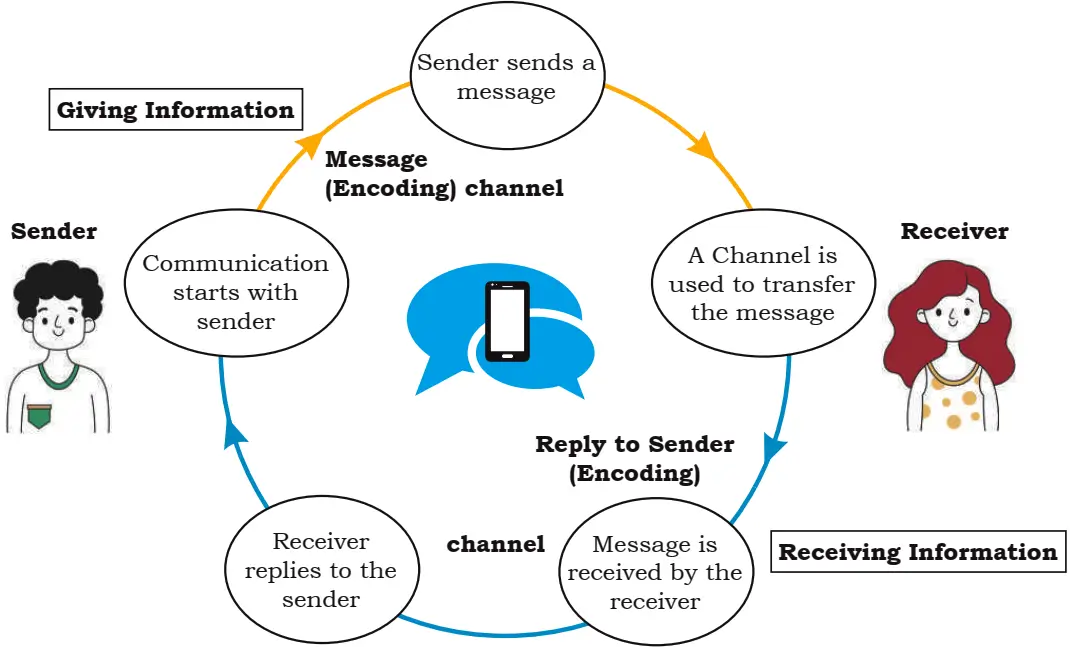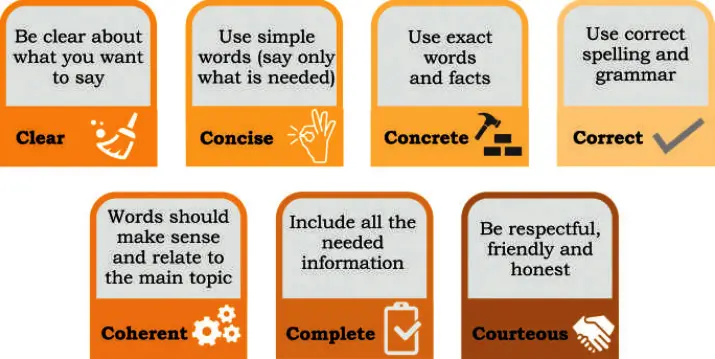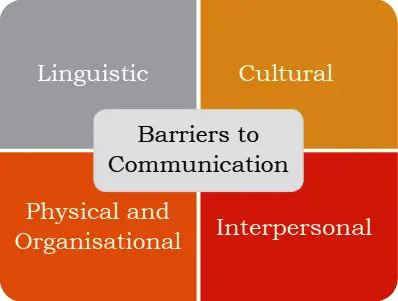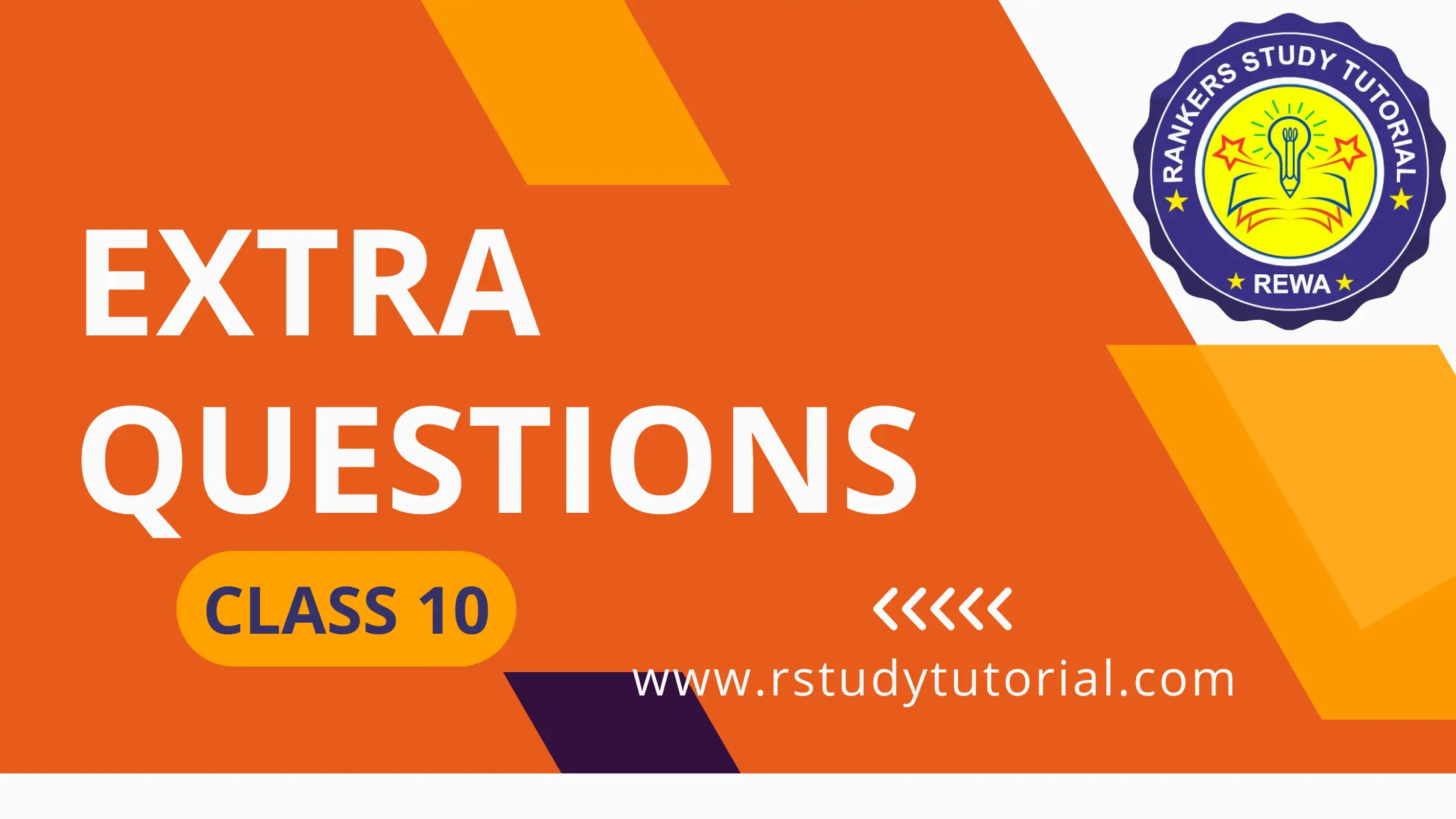Extra Questions for Class 10 IT (402) - Chapter 1 Communication Skills II
Are you looking for Extra Questions of 10 IT (402) – Chapter 1 Communication Skills II? You are at the right place. All the Extra Questions, Revision Notes, Multiple Choice Questions are available here. All the Extra Questions are completely FREE.
Short Answer Type Questions
Question.1. What are various elements of a communication cycle?
Answer. 
- Sender: the person beginning the communication.
- Message: the information that the sender wants to convey.
- Channel: the means by which the information is sent.
- Receiver: the person to whom the message is sent.
- Feedback: the receiver’s acknowledgement and response to the message.
Question.2. What is 7 C’s effective communication?
Answer. 
- Clear – Always say clearly, what you want to say.
- Concise – Always use simple language and say only what is required.
- Concrete – Always use proper words and phrases in the sentences.
- Correct – Always use correct spelling and grammar in the sentences.
- Coherent – Your word should be related to the main topic and your word should make sense.
- Complete – Your message should be complete and have all the needed information.
- Courteous – Be honest, respectful and friendly with others.
Question.3. List the various methods of communication.
Answer. The various methods of communication are –
- Face-to-face informal communication – There is nothing better than face-to-face communication. It helps the message to be understood clearly and quickly.
- e-mail – e-mail can be used to communicate quickly with one or many individuals in various locations. It offers flexibility, convenience and low-cost.
- Notice/Posters – It is effective when the same message has to go out to a large group of people. Generally used for where email communication may not be effective.
- Business Meetings – Communication during business meetings at an organisation are generally addressed to a group of people. It can be related to business, management and organisational decisions.
Question.4. What are the learning objectives of communication?
Answer. Learning objectives of Effective communication are :
- Sending, receiving and understanding the message or information
- Development of Interposal Skills
- To express effectively with maximum efficiency
Question.5. What is verbal communication and its type?
Answer. Sounds, words, language, and speech are all examples of verbal communication.
- Speaking is one of the most effective and often used in verbal communication methods.
- Interpersonal Communication – This type of communication is a one – on – one communication that takes place between two people. It can be formal or informal.
- Written Communication – This method of communication entails the use of written words. Letters, circulars, reports, manuals, SMS, social media chats, and so on are all examples. It could be a group of two or more persons.
- Small Group Communication – When there are more than two people participating, this form of communication occurs. Each participant has the opportunity to interact and speak with the others.
- Public Communication – The communication takes place when one individual addresses a large group of audience.
Question.6. Explain the importance of feedback.
Answer. Importance of feedback are –
- Validates Effective Listening: Shows you’re paying attention and understanding.
- Motivates People: Makes people feel good and encourages them.
- Boosts Learning: Helps us learn and improve.
- Improves Performance and Decision Making: Points out what’s done well and where to improve.
Question.7. What are the advantages and disadvantages of verbal communication?
Answer. Advantages of Verbal communication
- Time Saving – We can express our thoughts easily and quickly and it is an easier form of
communication. - Quick Feedback – We can get a quick response from the listener.
Disadvantages of verbal communication
- Cultural Difference – The cultural difference is the main disadvantage of verbal communication
- Language barriers – Difficult to share thoughts or ideas in different languages.
Long Answer Type Questions
Question.1. Explain the different types of non-verbal communication.
Answer. Different types of non-verbal communication are –
- Facial Expression – Our expressions can show different feelings, such as Happiness, Sadness, Anger, Surprise, Fear, etc.
- Posture – Postures show our confidence and feelings. For example, a straight body posture shows confidence while a slumped posture is a sign of weakness.
- Gestures or Body Language – Gestures include body movements that express an idea or meaning. For example, raising a hand in class to ask a question and biting nails when nervous.
- Touch – We communicate a great deal through touch. For example, a firm handshake to display confidence and pat on the back to encourage someone.
- Space – Space is the physical distance between two people. The space between tow persons while communicating, generally depends on the intimacy or closeness between them.
- Eye Contact – The way we look at someone can communicate a lot. Eye contact shows that we are paying attention to the person as opposed to looking away, which can make the other person feel ignored.
- Paralanguage – How we speak affects our communication and includes the tone, speed and volume of our voice. For example, talking fast may show happiness, excitement or nervousness while speaking slow may show seriousness or sadness.
Question.2. How many types of Feedback in communication skills? What are the good feedback in communication skills?
Answer. There are basically three types of feedback.
- Positive Feedback
- Negative Feedback
- No Feedback
A good feedback is one that is –
- Specific: General comment should be avoided. To clarify your statement, try to provide examples. Rather than giving advice let the receiver decide what to do with your feedback.
- Timely: Always respond on time, because if input is delayed for too long, it loses its impact.
Polite: While sharing feedback is necessary, the recipient should not be insulted by the input’s language. - Offering continuing support: Feedback should be shared on a regular basis. Let recipients know you’re available for help once you’ve given them feedback.
Question.3. What are the basic parts of speech in the English Language?
Answer. There are eight basic parts of speech in the English language. These are noun, pronoun, verb, adjective, adverb, preposition, conjunction and interjection.
- Noun – Nouns is the name of a person, place, animal or thing. This is also called ‘naming words.
- Pronoun – A pronoun is used in place of a noun.
- Adjectives – Adjectives are words that describe other words.
- Verbs – Verbs are words that show action.
- Adverbs – Adverbs are words that add meaning to verbs, adjectives, or other adverbs.
- Preposition – A preposition is a word palace before a noun or pronoun.
- Conjunction – A conjunction is a word that connects two words, phrases, or clauses.
- Interjection – A word used to communicate emotion is called an interjection.
Question.4. Explain the Barriers of the Effective Communication.
Answer. 
- Physical Barriers – The environmental and natural conditions that operate as a barrier in communication when conveying messages from sender to receiver are referred to as physical barriers.
- Linguistic Barriers – A language barrier to communication is the inability to communicate using a language. The most common communication barriers are language barriers, which lead to misunderstandings and misinterpretations between people.
- Interpersonal Barriers – When a sender’s message is received differently than intended, it creates barriers to interpersonal contact. It’s also tough to communicate with someone who refuses to converse or express their emotions or opinions.
- Organizational Barriers – Formal hierarchical structures are used to create organizations that adhere to performance standards, rules & regulations, processes, policies, and behavioral norms, among other things.
- Cultural Barriers – When people from different cultures are unable to understand each other’s languages, it causes problems and inconveniences.




